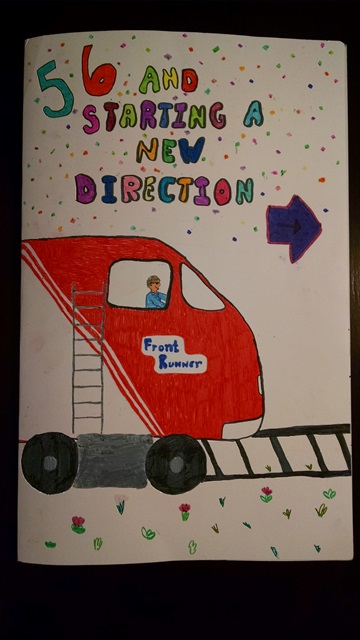Modern railroading, in the United States, includes a complicated intermingled relationship between the many hundreds of railroads operating as well as their regulatory agency, in this case the Federal Railroad Administration (FRA). In one sense, each railroad operates independent of the all the others, with their own Railroad infrastructure, trains and other equipment, personnel, operating policies, etc. Yet, they also have a certain interdependence on their railroad neighbors as they share these resources in the course of business. It is common for trains from one railroad to operate on another railroads track. Of course there are rules in place governing how all of that works.
As the early railroads emerged, in the 1820’s, from canal companies in the eastern states, they were focused on developing a faster and more efficient mode of transportation for people and their stuff than anything else in existence at the time. However, critics feared lack of safety. They said that boilers may explode. This was a justified concern. In 1815 in England an exploding boiler killed over a dozen people while injuring dozens more. What about collisions? Some claimed that railroads were of the devil and could cause a concussion of the brain.
The first recorded railroad accident in U.S. history
This occurred in 1832, when four people were thrown off of a car on the Granite Railway near Quincy, Massachusetts. The victims had been invited to view the process of transporting large and weighty loads of stone when a cable on a vacant car snapped, throwing them off the train and over a 34-foot cliff. One man was killed and the others were seriously injured.
Other early railroad accidents
In 1833, a train that carried both Cornelius Vanderbilt (who later headed the New York Central Railroad) and former US President John Quincy Adams. This was a derailment caused by an overheated wheel journal that broke an axel. Two were killed and 15 injured (including Vanderbilt).
In 1837, a lumber train in Virginia rounded a corner, with down grade speed, and collided with a passenger train. Three were killed and dozens of the remaining 200 passengers were injured.
In 1841 two passenger trains collided between Massachusetts and New York. Two were killed and 17 injured.
Then in 1850, the frequency and severity of railroad accidents seemed to mushroom. Apparently, with bigger faster trains, came bigger more fatal accidents. In this year, a railroad drawbridge wasn’t secured and 46 people plunged to their deaths while another 30 were severely injured but somehow survived. The same year two more trains collided killing 13 and injuring 50 more.
1855 – A crossing collision with horse and buggy. Twenty-four dead and 65-100 injured. And then later that year, a bridge collapse kills 31 with 100’s more injured.
Railroad rules:
In time, the various railroads developed rules to make their railroad operations more safe and efficient. These rules are the railroad’s response, after an accident, to make sure the same sort of thing doesn’t happen again. For example, I can see that the present day rule, “When overheated wheels are found on a train, the train must be stopped…” has its roots when Vanderbilt and John Quincy Adams were involved in their train wreck back in 1833.
Over the many years of railroading, these rules have grown into the hundreds.
At first railroad operating rules were often printed as pamphlets or on the back of a time card. Collaboration between neighboring railroads helped this evolve into more universal operating rules. On April 14, 1887, representatives of 48 railroads voted to adopt the Standard Code of Operating Rules (SCOR). This is the basis of the operating rules that American railroad now follow.
The general categories that these rules currently fall under include:
General Responsibilities, Railroad Radio and Communication Rules, Timetables, Signals and Their Use, Movement of Trains and Engines, Switching, Switches, Block System Rules, Rules Applicable Only in Centralized Traffic Control (CTC), Rules Applicable in ACS, ATC and ATS Territories, Rules Applicable only in Automatic Train Stop System (ATS) Territory, Rules Applicable Only in Automatic Cab Signal System (ACS) Territory, Rules Applicable only Within Track Warrant Control (TWC) Limits, Track Bulletin Rules, Rules Applicable Only in Direct Traffic Control (DTC) Limits, and Rules Applicable Only in Automatic Train Control (ATC) Territory.
GCOR:
Of the 510 railroads in the United States (give or take a few), 350 of them operate under GCOR. This body of 350 railroads formally meets every five years to review and update these rules to address newly emerging safety concerns and to keep current with the new technologies. The other 60 or so railroads, mostly in the Northeastern United States do a similar thing with their set of rules called Northeast Operating Rules Advisory Committee (NORAC).
Each railroad may also customize these GCOR rules to fit the unique circumstances of their operation. These railroad specific rules that complement the GCOR rules are called the System Special Instructions (SSI). These rules are reviewed and updated every year.
Additionally, each railroad has its own Timetables (which update periodically), and daily Track Bulletins & Track Warrants.
The Bottom Line:
All of this made for a rather challenging few months for me personally, while digesting these 150 plus years of rule making history as I assimilated the railroad culture into my everyday life.
Of course the improved safety is the great payoff. Statically, today you are 28 times more likely to be killed in an automobile accident than when traveling the same miles in a passenger train.
